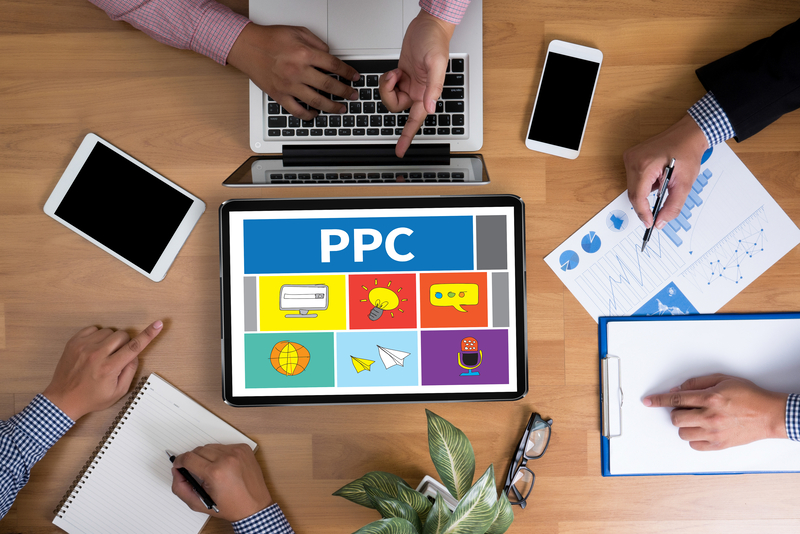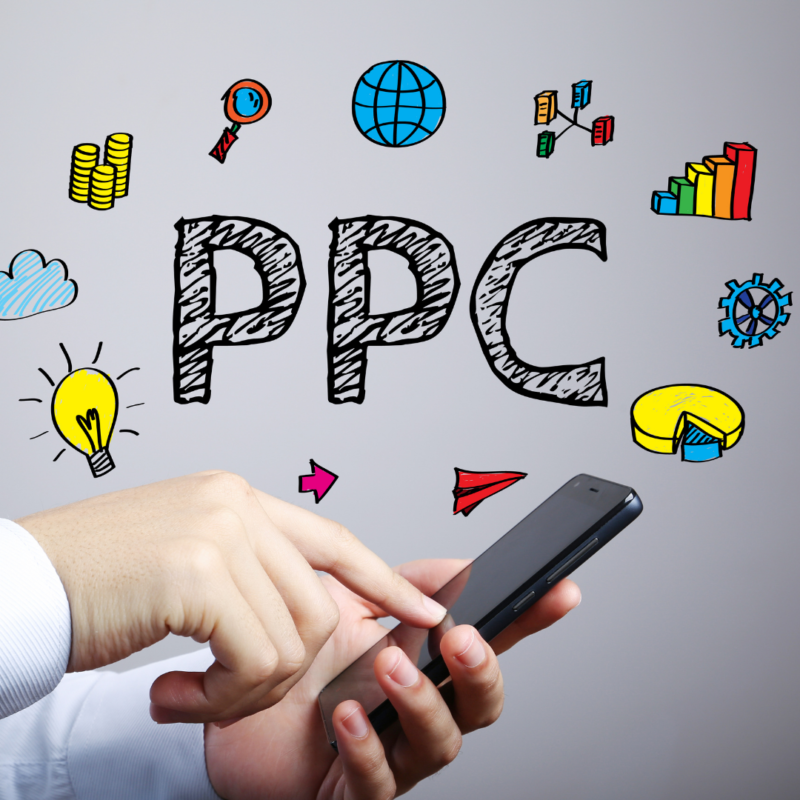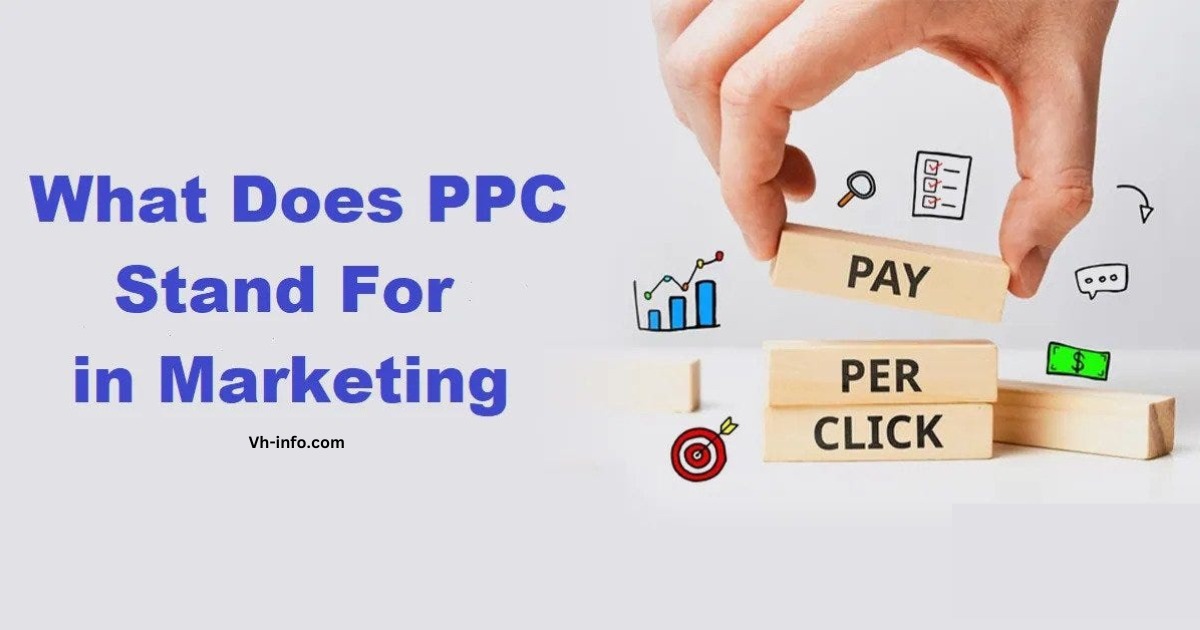In the ever-evolving landscape of digital marketing, pay-per-click (PPC) advertising has emerged as a powerful tool for businesses to reach their target audience and drive conversions.
PPC is a cost-effective and highly targeted advertising strategy that allows you to place ads on search engines, social media platforms, and websites.
However, before diving into the intricacies of PPC marketing, it’s essential to understand what PPC stands for and how it works.
What Does PPC Stand For in Marketing?

PPC stands for “pay-per-click,” which is an online advertising model where advertisers pay a fee each time someone clicks on their ad. In other words, you only pay when a user engages with your ad by clicking on it. This model is particularly attractive because it ensures that you’re only paying for qualified traffic, rather than impressions or views.
What Is Pay Per Click Management?
Pay-per-click management refers to the process of overseeing and optimizing PPC campaigns to ensure they are delivering the desired results. This involves tasks such as keyword research, ad copywriting, bid management, and campaign monitoring. Many businesses choose to outsource PPC management to experienced agencies or consultants who have the expertise and tools to maximize the return on investment (ROI) from PPC campaigns.
The Role of PPC in Marketing

PPC advertising plays a crucial role in modern marketing strategies. It complements other digital marketing efforts, such as search engine optimization (SEO) and content marketing, by providing a quick and effective way to drive targeted traffic to your website or landing pages.
PPC campaigns can be tailored to achieve various marketing goals, including:
- Increasing brand awareness
- Generating leads
- Boosting website traffic
- Promoting special offers or events
- Driving e-commerce sales
How Does PPC Advertising Work?
PPC advertising operates on an auction-based system, where advertisers bid on relevant keywords or phrases that users might search for on search engines or social media platforms. When a user enters a search query that matches one of your targeted keywords, your ad enters an auction against other advertisers bidding on the same keyword.
The ad platform (e.g., Google Ads, Microsoft Advertising, Facebook Ads) then determines the ad rank, which is a combination of your bid amount and the quality score of your ad. The quality score is a metric that evaluates the relevance and user experience of your ad, taking into account factors such as ad copy, landing page quality, and historical performance.
Ads with higher ad ranks are more likely to be displayed in prominent positions on the search engine results page (SERP) or social media feed, increasing their visibility and chances of being clicked.
Why Is PPC Important?
PPC advertising offers several advantages that make it an essential component of any comprehensive digital marketing strategy:
- Targeted Reach: PPC allows you to target specific audiences based on various factors, such as location, demographics, interests, and search intent, ensuring that your ads are shown to the most relevant users.
- Measurable Results: PPC campaigns provide detailed analytics and performance metrics, enabling you to track and measure the success of your ads, including impressions, clicks, conversions, and return on investment (ROI).
- Immediate Results: Unlike SEO, which can take months to yield significant results, PPC campaigns can generate traffic and conversions almost immediately after launching.
- Budget Control: With PPC, you have complete control over your advertising budget. You can set daily or monthly limits, and you only pay when someone clicks on your ad, ensuring that your advertising spend is directly tied to results.
- Flexibility: PPC campaigns can be easily adjusted and optimized based on performance data, allowing you to refine your targeting, ad copy, and bidding strategies to improve results.
Are PPC Ads Worth It?

The effectiveness of PPC ads depends on various factors, including your industry, target audience, and campaign goals. However, when executed correctly, PPC advertising can be a highly valuable and profitable marketing strategy.
Pros of PPC Marketing
- Targeted Traffic: PPC allows you to reach users who are actively searching for products or services related to your business, increasing the likelihood of conversions.
- Measurable Results: PPC campaigns provide detailed analytics and performance metrics, enabling you to track and measure the success of your ads, including impressions, clicks, conversions, and return on investment (ROI).
- Immediate Results: Unlike SEO, which can take months to yield significant results, PPC campaigns can generate traffic and conversions almost immediately after launching.
- Budget Control: With PPC, you have complete control over your advertising budget. You can set daily or monthly limits, and you only pay when someone clicks on your ad, ensuring that your advertising spend is directly tied to results.
- Flexibility: PPC campaigns can be easily adjusted and optimized based on performance data, allowing you to refine your targeting, ad copy, and bidding strategies to improve results.
Cons of PPC Marketing
- Ongoing Costs: PPC advertising requires a continuous investment, as you need to pay for each click on your ads.
- Competition: Popular keywords and industries can be highly competitive, driving up the cost per click and making it more challenging to achieve a positive return on investment (ROI).
- Ad Fatigue: Users may become desensitized to PPC ads over time, leading to a decrease in click-through rates (CTRs) and conversions.
- Complexity: Effective PPC campaign management requires expertise in areas such as keyword research, ad copywriting, bid management, and campaign optimization, which can be time-consuming and challenging for those without prior experience.
What is Important for PPC Strategy and Campaign Planning?
Developing a successful PPC strategy and campaign plan requires careful consideration of several key factors:
- Goal Setting: Clearly define your marketing goals, whether it’s increasing brand awareness, generating leads, or driving sales. Your goals will guide the development of your PPC campaigns and help you measure their success.
- Target Audience: Identify your target audience and understand their needs, interests, and search behaviors. This information will help you create relevant and compelling ad copy and target the right keywords.
- Keyword Research: Conduct thorough keyword research to identify the most relevant and high-performing keywords for your business. This will ensure that your ads are displayed to users who are actively searching for your products or services.
- Ad Copy and Landing Pages: Craft compelling ad copy and create high-quality landing pages that align with your target audience’s needs and search intent. Well-designed landing pages can significantly improve your conversion rates.
- Bidding Strategy: Determine an appropriate bidding strategy based on your goals and budget. Common bidding strategies include manual bidding, automated bidding, and bid adjustments based on various factors such as device, location, or time of day.
- Budget Allocation: Set a realistic budget for your PPC campaigns and allocate it effectively across different ad groups, keywords, and ad platforms.
- Tracking and Optimization: Continuously monitor and analyze your campaign performance, making data-driven optimizations to improve your results over time.
Key Components of Google PPC Ads
When creating PPC ads on Google, there are several key components that you need to consider:
- Headline: The headline is the first thing users see, and it should be attention-grabbing and relevant to your offer.
- Description: The description provides more details about your product or service and should include a clear call-to-action (CTA).
- Display URL: The display URL is the visible URL that users see in your ad, and it should be easy to read and relevant to your landing page.
- Final URL: The final URL is the actual landing page that users will be directed to when they click on your ad.
- Extensions: Extensions are additional pieces of information that can be added to your ad, such as location information, call buttons, or links to specific pages on your website.
- Ad Rank: Ad Rank is a metric used by Google to determine the position of your ad on the search engine results page (SERP). It is calculated based on your bid amount, quality score, and other factors.
What are the Top PPC Advertising Platforms?
While there are numerous PPC advertising platforms available, some of the most popular and widely used platforms include:
Google Ads
Google Ads is the largest and most widely used PPC advertising platform, allowing you to place ads on Google’s search engine results pages (SERPs), as well as on websites and apps within the Google Display Network.
YouTube
As a subsidiary of Google, YouTube offers PPC advertising opportunities through Google Ads. You can create video ads that appear before, during, or after YouTube videos, as well as display ads on the YouTube platform.
Facebook Ads
Facebook Ads is a powerful PPC platform that allows you to target users based on various demographic, behavioral, and interest-based factors. You can create ads for Facebook, Instagram, and the Facebook Audience Network.
Instagram Ads
Instagram Ads are managed through the Facebook Ads platform and allow you to create visually appealing ads that blend seamlessly into users’ Instagram feeds.
Microsoft
Microsoft Advertising (formerly Bing Ads) is the second-largest search engine advertising platform, offering PPC advertising opportunities on Bing, Yahoo, and partner sites.
TikTok
TikTok Ads is a relatively new PPC platform that allows you to create engaging video ads and reach a younger, highly engaged audience on the popular social media platform.
LinkedIn Ads is a PPC platform specifically designed for B2B advertising, allowing you to target professionals based on factors such as job title, company, industry, and more.
Twitter Ads is a PPC platform that enables you to create text, image, and video ads that appear in users’ Twitter feeds or within the Twitter app.
What are the Types of PPC Ads?
PPC advertising encompasses various ad formats and types, each designed to achieve specific marketing goals and reach users in different contexts.
Here are some of the most common types of PPC ads:
Search
Search ads, also known as text ads, are the most traditional form of PPC advertising. These ads appear at the top or bottom of search engine results pages (SERPs) when users search for specific keywords related to your business.
Display
Display ads are visual advertisements that appear on websites, apps, and other digital platforms within the Google Display Network or other ad networks. These ads can be in the form of banners, images, or rich media formats.
Video
Video ads are a popular and engaging form of PPC advertising, particularly on platforms like YouTube, Facebook, and Instagram. These ads can be skippable or non-skippable, and they can appear before, during, or after video content.
Remarketing (or Retargeting)
Remarketing, also known as retargeting, involves displaying ads to users who have previously visited your website or interacted with your brand. These ads can be shown across various platforms and can be highly effective in re-engaging potential customers.
Other Ad Types
In addition to the above, there are other types of PPC ads, such as shopping ads (for e-commerce products), app install ads (for promoting mobile apps), and call-only ads (for generating phone calls).
How to Create a PPC Campaign with Google Ads?
Google Ads is one of the most popular and widely used PPC advertising platforms.
Here’s a step-by-step guide on how to create a PPC campaign with Google Ads:
Set Up an Account
The first step is to create a Google Ads account if you don’t already have one. You’ll need to provide some basic information about your business and set up billing.
Select Your Goal and Campaign Type
Once you’re logged in, you’ll need to select your advertising goal (e.g., get more website sales, generate leads, or increase brand awareness) and choose the appropriate campaign type (e.g., Search, Display, Video, or Shopping).
Choose a Bidding Strategy and Set Your Limit
Google Ads offers various bidding strategies, such as manual bidding, automated bidding, or target cost-per-acquisition (CPA) bidding. You’ll also need to set a daily or monthly budget limit for your campaign.
Configure Your Campaign Settings and Targeting
In this step, you’ll configure your campaign settings, such as location targeting, language, and device preferences. You’ll also need to define your target audience based on factors like demographics, interests, and behaviors.
Enter Your Keywords and Upload Your Ad Assets
Conduct thorough keyword research and enter the relevant keywords you want to target. You’ll also need to create your ad copy and upload any necessary ad assets, such as images or videos.
Create Your Ads
Using the ad assets and keywords you’ve provided, you can create your PPC ads within the Google Ads interface. Make sure to follow best practices for ad copywriting and include compelling calls-to-action.
Set Your Budget
Determine your daily or monthly budget based on your advertising goals and the potential return on investment (ROI) you expect from your PPC campaign.
Review Your Campaign
Before launching your campaign, review all the settings, targeting options, and ad copy to ensure everything is correct and aligned with your marketing objectives.
PPC Marketing Best Practices: Tips for Better Results
To maximize the effectiveness of your PPC campaigns and achieve better results, consider implementing the following best practices:
- Conduct Thorough Keyword Research: Identify the most relevant and high-performing keywords for your business by using tools like Google Keyword Planner, SEMrush, or Ahrefs.
- Write Compelling Ad Copy: Craft attention-grabbing and relevant ad copy that resonates with your target audience and includes a clear call-to-action.
- Optimize Landing Pages: Ensure that your landing pages are well-designed, user-friendly, and aligned with the messaging and promises made in your ads.
- Leverage Negative Keywords: Use negative keywords to exclude irrelevant searches and prevent your ads from being displayed to users who are unlikely to convert.
- Implement Conversion Tracking: Set up conversion tracking in Google Analytics or other analytics tools to accurately measure the performance of your PPC campaigns and make data-driven optimizations.
- Test and Optimize: Continuously test and optimize your ad copy, landing pages, and targeting options to improve your click-through rates (CTRs) and conversion rates.
- Monitor and Adjust Bids: Regularly monitor your campaign performance and adjust your bids based on the actual cost-per-conversion and your desired return on investment (ROI).
- Leverage Ad Extensions: Use ad extensions, such as sitelinks, call extensions, or location extensions, to provide additional information and improve the visibility and click-through rates of your ads.
- Segment and Refine Targeting: Segment your campaigns and ad groups based on factors like location, device, or audience characteristics to improve targeting and relevance.
- Stay Up-to-Date with Industry Changes: Stay informed about updates and changes in the PPC advertising landscape, and adjust your strategies accordingly to maintain a competitive edge.
Conclusion
PPC advertising is a powerful and effective digital marketing strategy that can help businesses of all sizes reach their target audience, drive targeted traffic, and achieve their marketing goals. By understanding what PPC stands for, how it works, and the various platforms and ad types available, you can develop a comprehensive PPC strategy that aligns with your business objectives.
At VH-info, we specialize in providing premium link building services for SaaS companies, helping them improve their search engine rankings and drive targeted traffic to their websites. Our team of experts can assist you in developing and executing a successful PPC campaign, ensuring that your ads are optimized for maximum visibility and conversions.
Remember, effective PPC marketing requires ongoing optimization, testing, and refinement. By following best practices, leveraging data-driven insights, and staying up-to-date with industry changes, you can maximize the impact of your PPC campaigns and achieve a higher return on investment.

